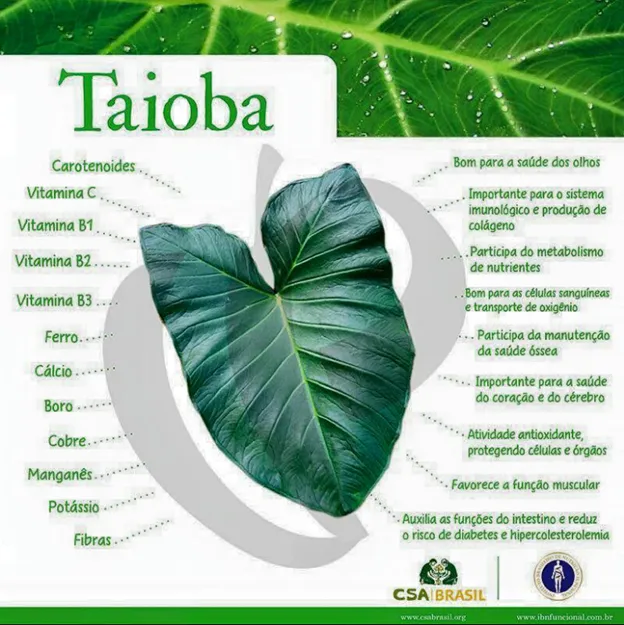I keep mentioning taioba in my posts, so when I saw this CSA Brazil meme regarding its nutritional benefits in my Facebook feed today I thought I'd translate and share it!
Taioba leaves are eaten in Minas gerais and Rio de Janeiro, although it is a food custom that more times than not is associated with memories of grandparents and is only recently seeing a resurgence in popularity. Whilst you're unlikely to see it available in a supermarket, you are very likely to see a bunch of leaves for sale for a few reais at a farmers market.
Taioba is a rather half-wild half-domesticated plant, sometimes being planted and oft times occurring naturally, or "spontaneously" ("espontaneamente") as Brazilians would say. It is frequently seen in backyards and the margins of cultivated fields. Whilst younger smaller leaves from shady spots are the best for eating, these leaves can grow to impressively enormous size.
As I mentioned previously, taioba should not be eaten raw, and care should be taken to correctly identify it. Many people in rural Rio de Janeiro have a story up their sleeve about some second cousin or aunt who died after eating taioba brava having thought they had correctly identified it.

Contains:
-Carotenoids
-Vitamin C
-Vitamin B2
-Vitamin B3
-Iron
-Calcium
-Boron
-Copper
-Manganese
-Potassium
-Fibres
Benefits:
-Good for maintaining healthy eyes.
-Significant help for the immunological system and production of collagen.
-Contributes to metabolism of nutrients.
-Good for the red blood cells and transport of oxygen.
-Contributes to maintaining healthy bones.
-Significant contribution for a healthy heart and brain.
-Antioxidant activity, protecting cells and organs.
-Helps muscular function.
-Assists intestinal functions and reduces the risk of diabetes and high blood pressure.
Credit:
This image is a promotional material from CSA Brazil and IBN Functional.
I'm currently doing a PhD regarding wild and semi-domesticated food plants in Brazil, and the reasons why people collect them... and trying to some extent map the complexity of socio-economic values they hold for people. If that sounds interesting please Upvote and Follow!